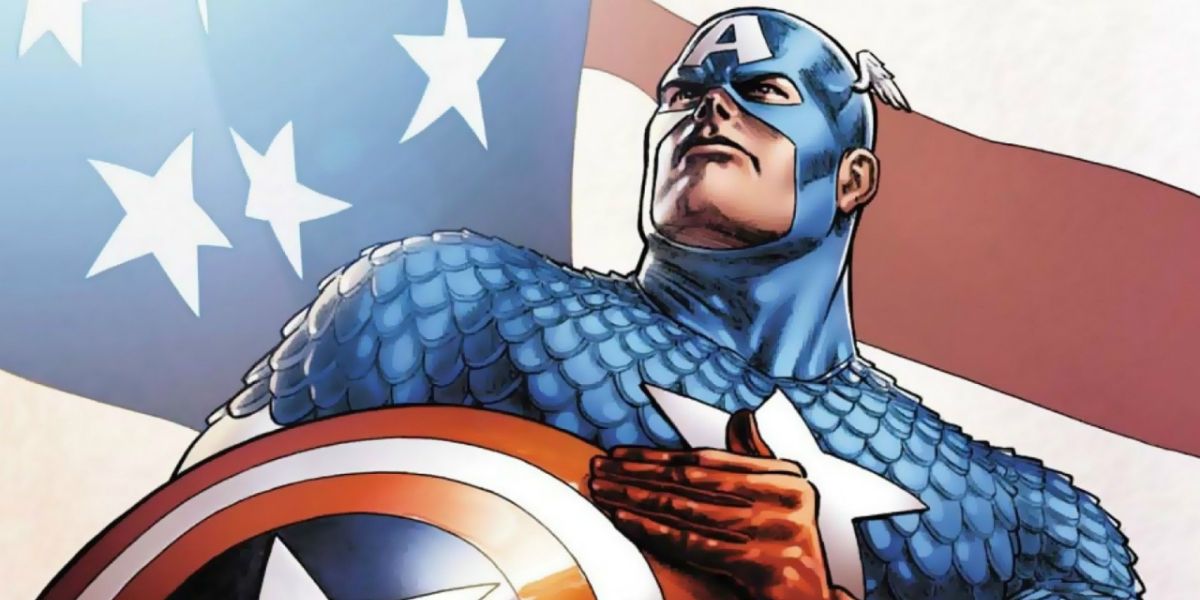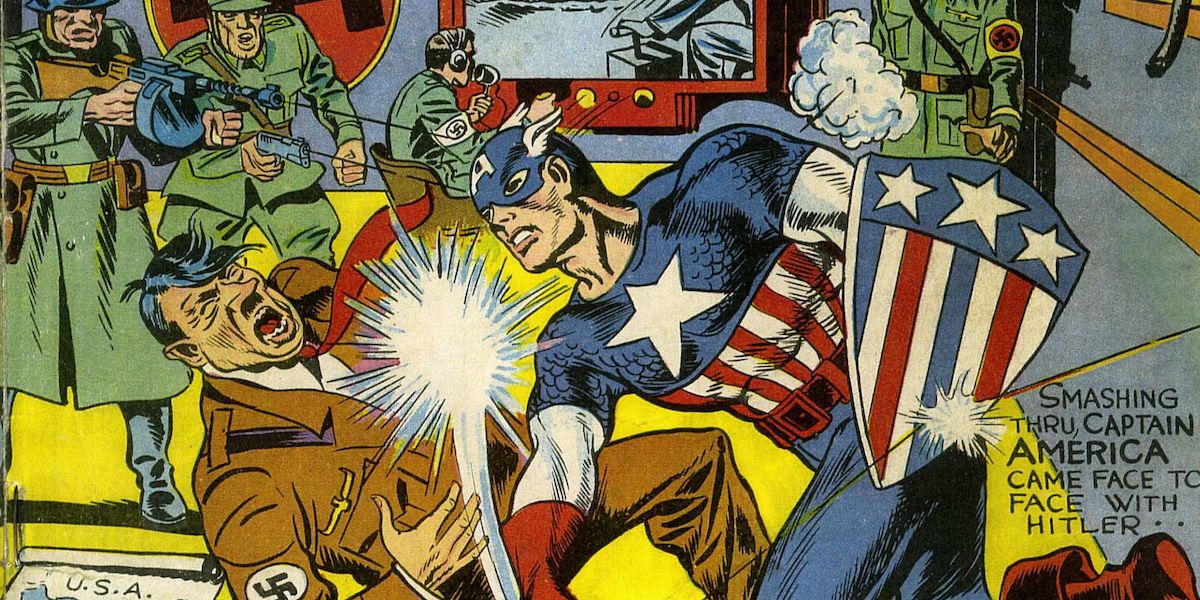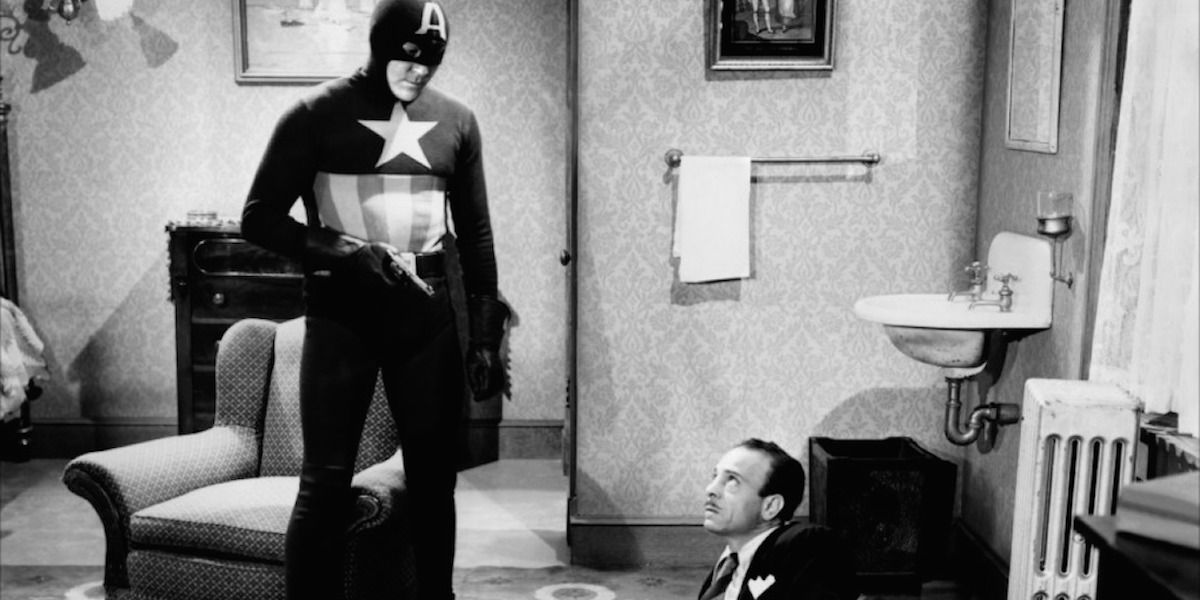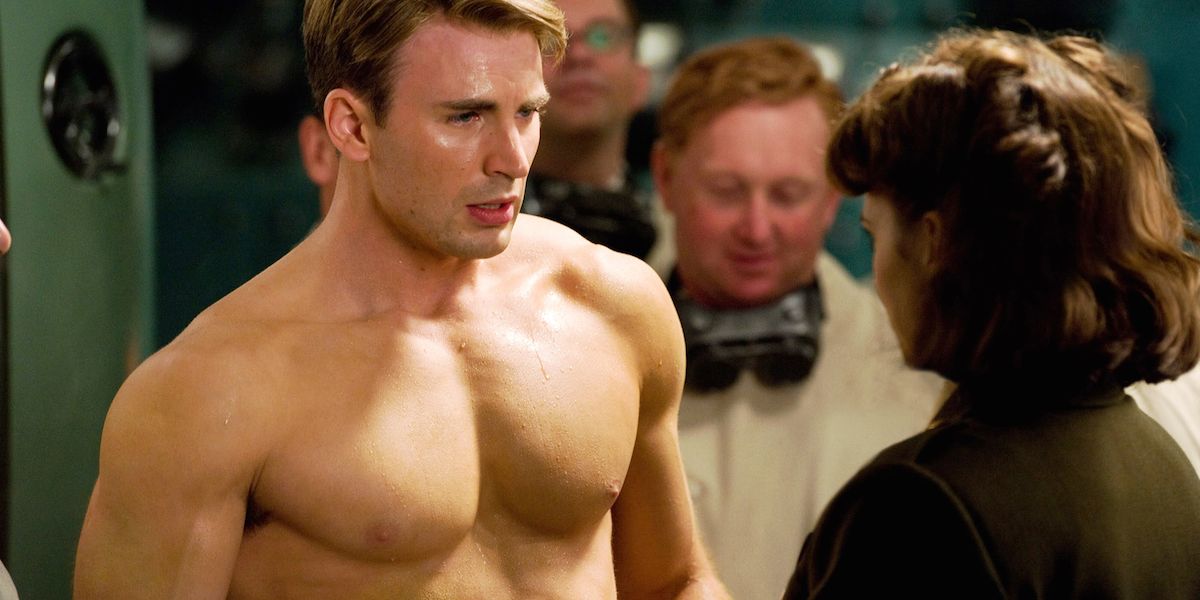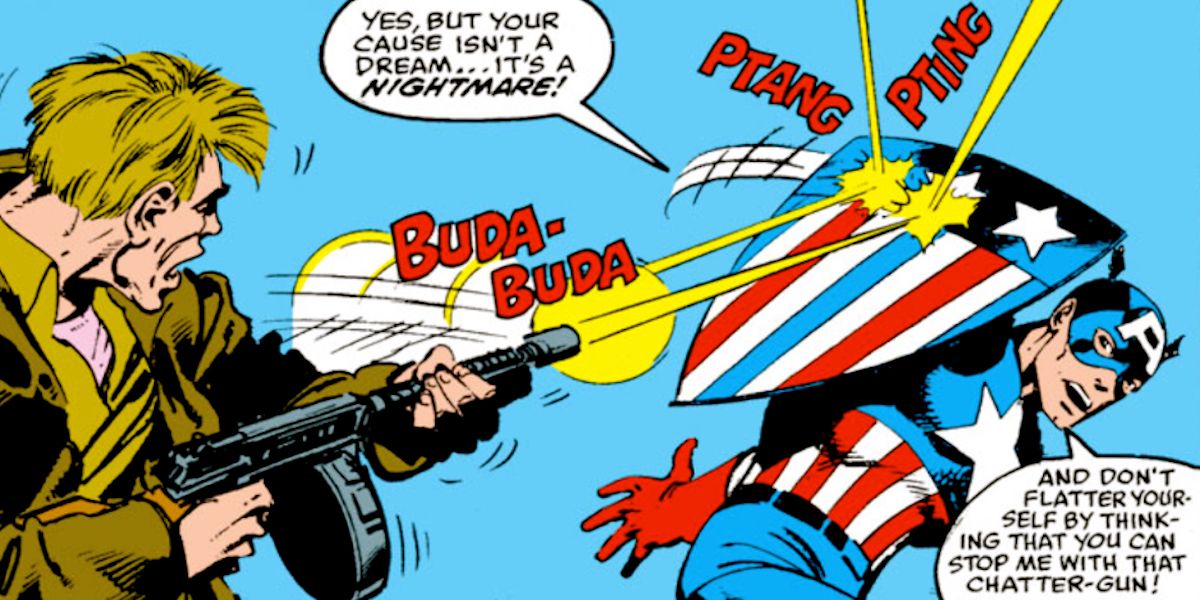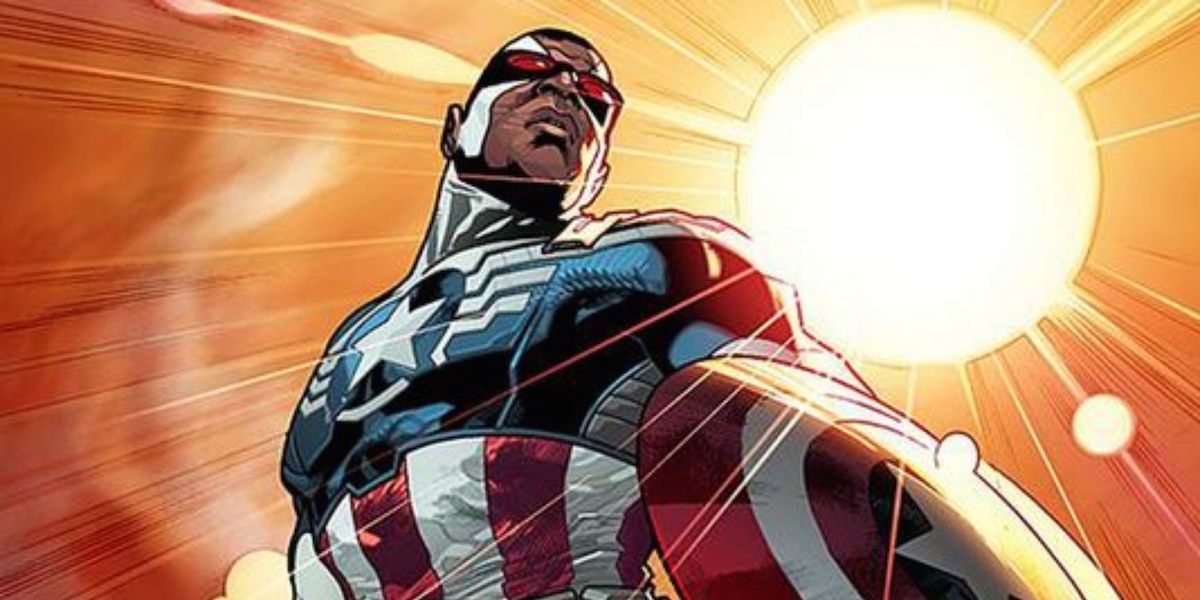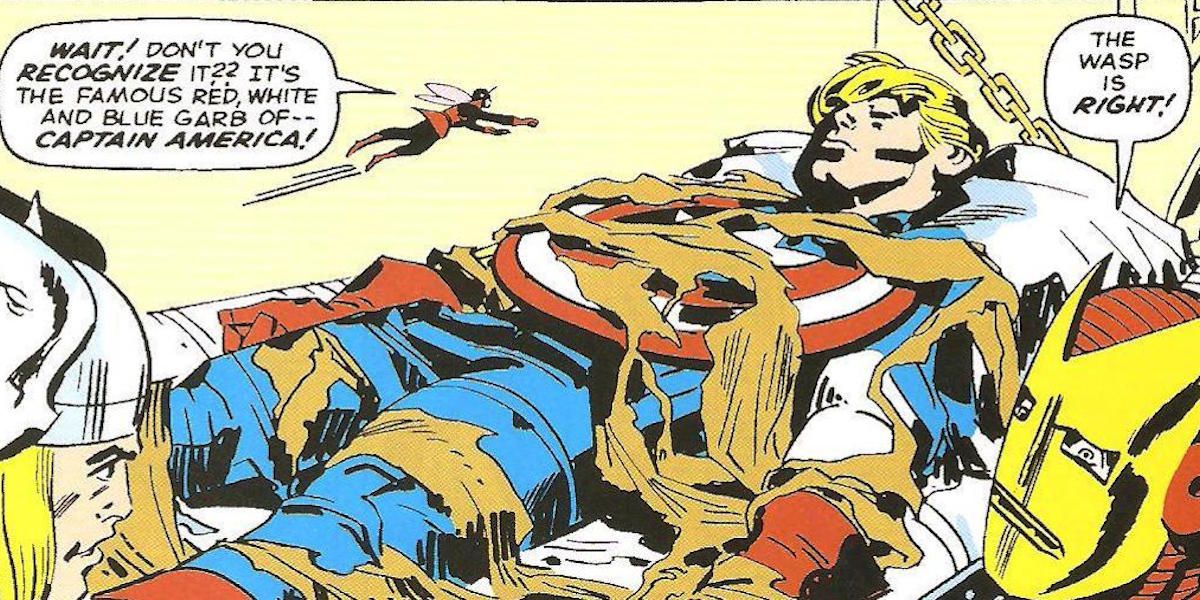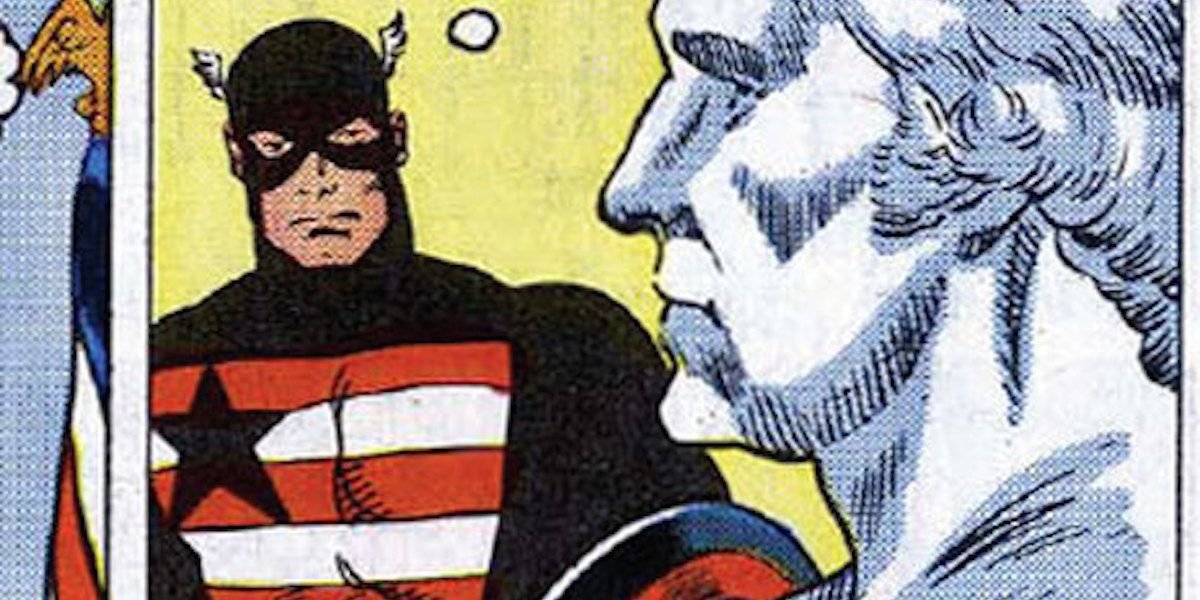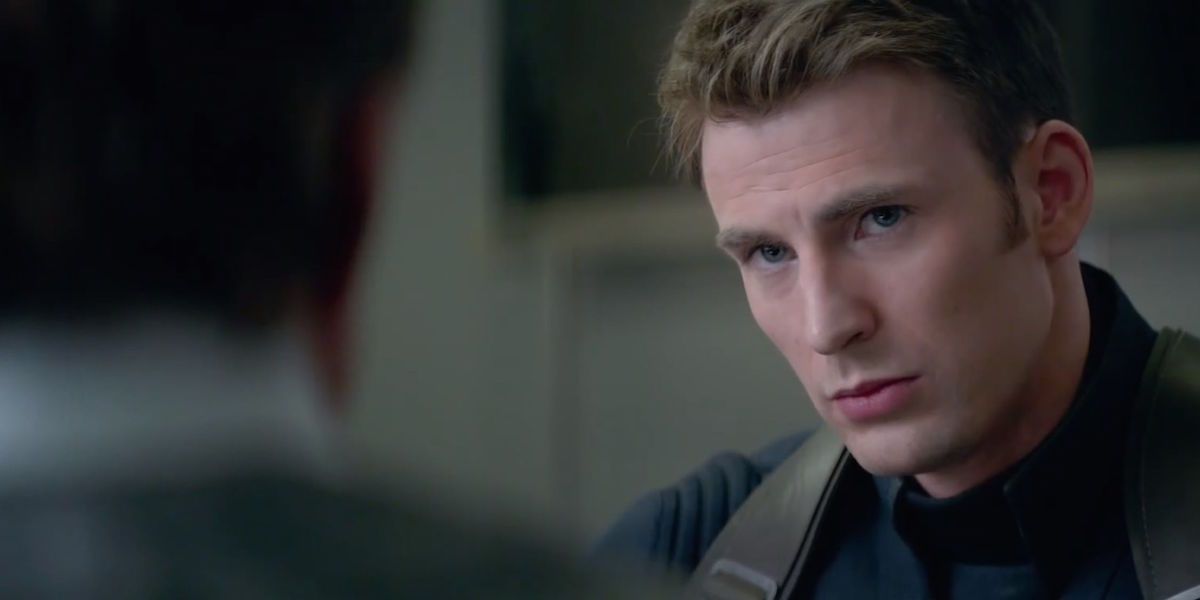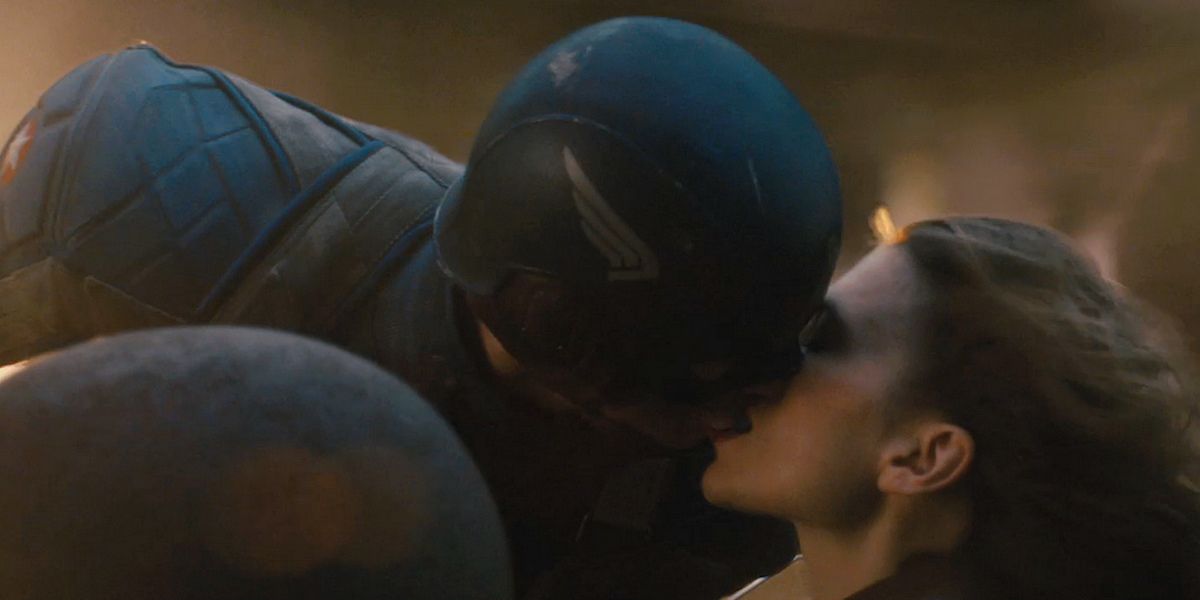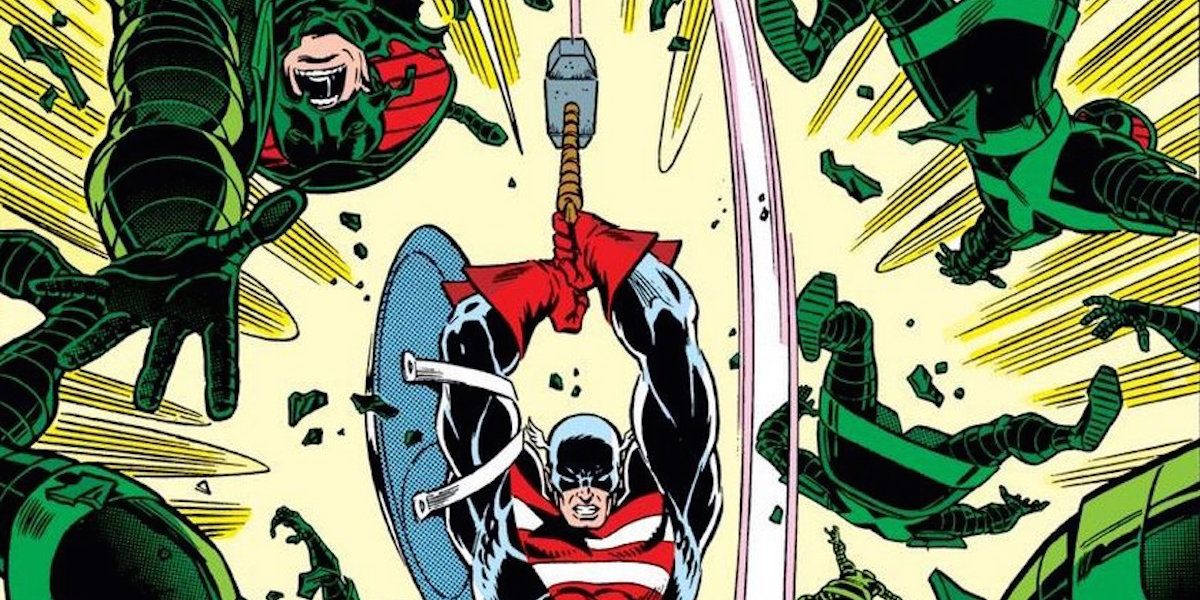Captain America is one of Marvel’s most enduring superheroes (since the days of Timely Comics and before the United States' entry into World War II), and is soon to be the star of his third solo film (kinda). Captain America has undergone more changes than most major comic book characters, and has remained in publication since his formal revival in 1964’s The Avengers #4. While many people who aren’t comic book aficionados know a lot more about the character than they did before the popular Marvel films, there are a number of interesting and important factoids that any self-respecting Cap fan should know.
Here are 10 Things You Should Know About Captain America.
He Was Almost Called "Super American"
The character was originally created by Joe Simon and Jack Kirby in 1940 as a response to World War II. The United States had not yet become involved in the actions of the War, and Simon and Kirby wanted to create a character with a strong political slant who emphasized their feelings on why the country should become involved. Patriotic superheroes were extremely popular at the time.
When Simon drew the original sketch of the character, he wrote "Super American" beneath it. He quickly realized it wouldn’t work because there were already too many "Super" characters in publication, so the name "Captain America" was chosen instead. In a rare instance for a new superhero, Cap debuted with his own comic in March of 1941, the cover of which depicted him punching Hitler in the face. That was nine months before the attack on Pearl Harbor. Though the comic quickly sold over a million copies, there were also protests against the pro-war sentiments that the comics stood for, which became so intense the offices of Timely Comics received police protection from the Mayor of New York City.
After eight years of Cap fighting his nemesis Red Skull with his sidekick Bucky Barnes (both of whom appeared in the original issue), superhero comics went out of fashion, and the comic itself was turned into a horror-suspense anthology before folding. But before Cap made his official return, audiences would be tested later in a 1963 issue of Strange Tales involving the Human Torch to see if they would be interested in having Captain America back again.
His First Film Appearance Was a 1944 Serial
When the character was still at the height of his popularity (and we were still in the middle of WWII), a black-and-white serial was released starring Dick Purcell as Captain America (aka District Attorney Grant Gardener) and Lorna Gray as his secretary, Gail Richards. The serial received praise from critics, and though it left out many of the defining traits associated with the character (including his shield, the Super-Soldier Serum, and his original identity of Steve Rogers), later film, television, and comic versions have made reference to it in various ways.
The character appeared in many media incarnations in the years since, including a 1966 animated television show, The Marvel Super Heroes, a straight-to-video film in 1990, and the animated series The Avengers: Earth’s Mightiest Heroes, which was replaced by Avengers Assemble in 2013 and soon Avengers: Ultron Revolution. In 2011, Captain America: The First Avenger was released, with a sequel released in 2014.
The Super-Soldier Serum Gave Him More Than Just Strength
By now, most of us know the story of how Steve Rogers, a young man from New York City who tried to enlist in the Army but was rejected as 4-F because of his poor health, was administered the Super-Soldier Serum, which gave him the full hot order of perfect human attributes. Not only did the Serum give him peak human strength, speed, stamina, and reflexes, but also made him extremely agile (more so than any Olympic gold medalist). He can also see faster than bullets, and can therefore dodge them, and he's able to heal rapidly. The Serum extended his mental performance as well, making him a tactical genius and extremely quick to respond to problems.
However, there are a number of attributes Rogers didn’t receive from the Serum, including his strong will and his artistic abilities. He is also fluent in a number of languages, something that is only briefly touched on in Captain America: The Winter Soldier. Though Tony Stark goads him in The Avengers film by saying, “Everything special about you came out of a bottle,” Rogers works at his talents and seems to consistently form new ones.
His Shield Wasn't Always a Vibranium Frisbee
Cap’s original weapon of choice was a triangular shield that befitted the stars-and-stripes look of the time. However, MLJ Magazines, which would eventually become Archie Comics, already had their own patriotic superhero aptly called The Shield, and Cap's weapon strongly resembled the symbol on the character’s chest. Simon and Kirby immediately created the second shield for issue #2, the one we still recognize today.
In the actual story, the reasoning for the shield’s change was a lot more elegant. During his missions in WWII, Rogers meets T’Chaka, the Chieftain of the African nation of Wakanda and father of T’Challa (who will appear first in 2016’s Civil War and later in his own standalone film, Black Panther). Rogers receives a sample of the metal Vibranium from T’Chaka and brings it back to America. When the metal is then used in experiments by Dr. Myron MacLain, the shield is accidentally forged with the doctor having no knowledge of how to duplicate it. It is then presented to Rogers by President Franklin D. Roosevelt, and because of its indestructibility and aerodynamic abilities, it replaced Rogers’ gun as his main weapon.
Captain America Hasn't Always Been Steve Rogers
While Rogers has changed monumentally from the character he once was (with the secret identity of a bumbling private to boot), he isn’t the only Captain America we’ve seen. One notable version was William Nasland, who was selected to become the new Captain America when Rogers and Barnes disappeared at the end of the War. (This storyline was actually added in so later versions of the comic would make sense.) Another is James Buchanan Barnes, aka Bucky, who, after the events of Marvel’s Civil War storyline and Rogers’ death, took on the identity of his former friend. In the current Marvel comics run, the official Captain America is Sam Wilson, who was previously known as The Falcon (portrayed by Anthony Mackie in the films).
Even though the identity of Captain America has been taken on by many men, his ideals represent protecting the innocent and the personal freedoms of all individuals, bravery, and righteousness. Much of this is what has led to the character, in whatever incarnation, being labeled as one of the greatest heroes in the Marvel Universe, if not the greatest.
He Was Not An Original Member of the Avengers
Despite the way many of the adaptations portray the story, the original Avengers lineup didn’t include Cap. The team actually found him buried in ice in the fourth issue of The Avengers comics in 1964. While the founding Avengers were Thor, Ant-Man, Wasp, Iron Man, and the Hulk, Captain America joined the team in the Hulk’s place after the latter left because of the others’ reaction to his uncontrollable powers. Cap soon received retroactive founding member status and was the only “original” member to stay on the roster when it changed soon after to include Hawkeye, Quicksilver, and the Scarlet Witch.
Over time, Cap became indispensable to the team and even led them because of his vast tactical knowledge and battle experience, creating the dynamic most movie fans are familiar with. Cap still appears on the main team’s roster today as Sam Wilson, and has been in a number of different versions of the team, often as Rogers but sometimes as different incarnations of the character.
Despite His Name, He is Neither a Nationalist Nor a Chauvinist
Captain America has come a long way from the pro-war and pro-American political statement his character made with his first appearance. Though he loves his country, Rogers has had moments of dissent from his government when its actions and beliefs no longer matched his own. He took on the alias of "Nomad" when a conspiracy caused him to become disillusioned with his original role and only reassumed the mantle after the Red Skull killed the young fan who succeeded him. Rogers also became another hero, The Captain, but a similar series of events led him to return to the shield once more.
These issues with the government and its frequent incongruity with the ideals of Captain America are part of what led to the clash between Stark and Rogers in Marvel’s popular Civil War event. While Stark sides with the Superhero Registration Act that means to force heroes to provide their information to the government, Rogers becomes anti-registration, believing that the Act will endanger many people and also fly in the face of personal freedom. Rogers only backs down when he realizes the war they create hurts the people he’s fighting to protect, a true showing of his character.
Chris Evans Turned Down the Movie Role Three Times Before Accepting
As previously stated, Evans had already played the part of Johnny Storm in the Fantastic Four series, which might have only been part of the reason why he initially turned down the role of Steve Rogers. In an interview, Evans stated, “The fear was, you’re making a decision for the next six, seven, eight years of your life…” He decided later not to make the choice based on fear and said, “Whatever scares you, jump in… And in retrospect, if I hadn’t done it, I’d be kicking myself because it’s the best thing I could have done.”
Other actors considered for the role included Ryan Phillippe, John Krasinski, Channing Tatum, and Chace Crawford. Sebastian Stan was also a possible candidate but was chosen to play Bucky Barnes instead. Evans has said that he also decided to take the role because he thinks “the story of Steve Rogers is great. He’s a great guy. Even if it was just a script about anybody, I would probably want to do it.”
He's Enjoyed His Share of Romance
From the films, most people know about Rogers’ romance with Peggy Carter, which was halted by tragic circumstances, but in the comics it just fizzled out and become more of a friendship. (Side note: When Emily Blunt turned down the role of Peggy Carter, it went to Hayley Atwell, who now has her own television show on ABC, Agent Carter.)
However, this wasn’t Cap’s only foray into romantic entanglements. Most notably, Rogers has shared an on-again off-again relationship with Sharon Carter, also known as Agent 13. Originally said to be Peggy's sister, Sharon was retconned as her niece, and she plays heavily into the events of Marvel’s Civil War.
Among Rogers' other romantic interests were (briefly) the Scarlet Witch and Bernie Rosenthal, a lawyer who appeared in in the comic in 1980. In the animated film Next Avengers: Heroes of Tomorrow, James Rogers is the son of Captain America and Black Widow (three guesses on where that name came from…). But most interestingly, in an alternate reality found by Reed Richards after the events of Civil War, Rogers is married to Iron Woman, a union that helped avert the war caused by the Superhero Registration Act. If only.
He Has Been Shown to Be Worthy
In Avengers: Age of Ultron, Rogers laments to Stark that an elevator would go up even if Thor’s hammer Mjolnir were inside, despite the fact that only worthy individuals should be able to lift it. “Elevator’s not worthy,” says Rogers, as he was only able to make the hammer budge a little. Well, not to worry, Cap. There’s actually proof that Rogers is worthy of lifting Mjolnir, which happened in 1988 when he was going by the identity of The Captain, and afterward he handed it back to Thor like the gentleman he is. Rogers lifted it again during the comic event Fear Itself when Mjolnir accidentally fell to Earth.
In this special skill, he joins such company as Jane Foster (the current Thor in the Marvel comics universe), Beta Ray Bill, and Thunderstrike. Though it would be amazing to get to see Rogers wield the hammer in the Marvel Cinematic Universe, it doesn’t seem likely... but here’s hoping!

